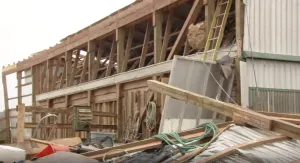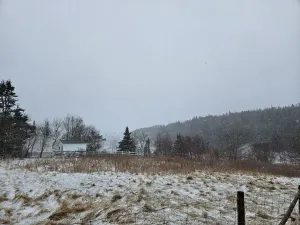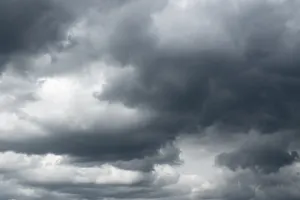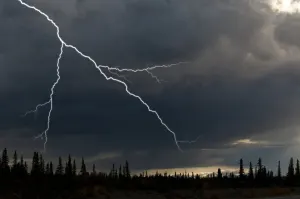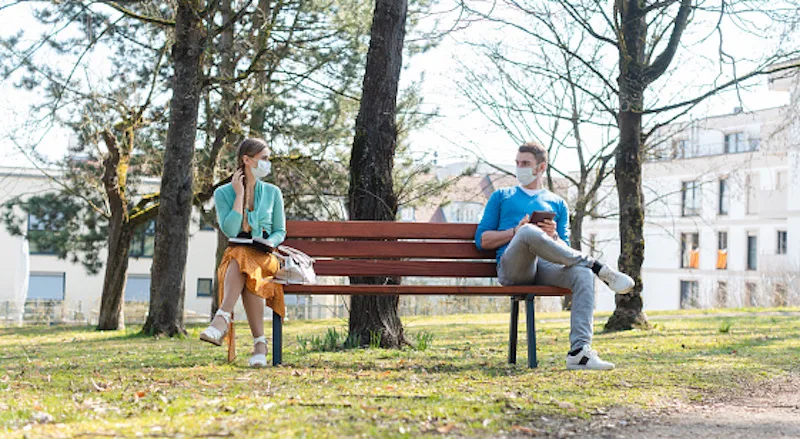
As weather improves, questions about outdoor COVID-19 transmission risks grow
(CBC) - As millions of Canadians eye the imminent arrival of better weather, and feel the effects of six weeks stuck largely at home, some are wondering whether spending more time outdoors is a risk worth taking amid the COVID-19 pandemic.
Research about the likelihood of outdoor transmission of the new coronavirus is virtually non-existent. While crowded outdoor spaces pose a clear risk of infection, there is little doubt that COVID-19 spreads far more easily indoors than outdoors.
The competing priorities of urging people to stay at home to prevent infections and the mental health costs of spending too much time indoors, mixed in with the unclear risks of outdoor transmission have public health officials struggling to craft a clear and consistent message.
Go here for our complete coverage of the COVID-19 pandemic
B.C.'s medical officer of health Dr. Bonnie Henry told people in her province Wednesday to go outdoors. "The risk (of catching the virus) would be infinitesimally small if somebody walks by you, runs by you — even if they are within six feet," she said.
Her Ontario counterpart is less definitive.
"I'm not discouraging people from going outdoors," Dr. David Williams said Wednesday when asked about the risks of outdoor transmission. "Generally people outdoors will have more space to be apart from each other."
Williams said it's important that people who go outside do so in ways that allow for physical distancing.
"When there's good weather, I know it's very hard for people to stay inside," he told the province's daily COVID-19 briefing. "People have a bit of cabin fever."
His advice: "Don't go to places where you think everybody else is going to go. Don't go at hours when everybody else is going."
SEE ALSO: Ontario provides COVID-19 re-opening map
It's not the easiest thing to do in densely populated urban areas.
Marc Parravano lives in a 650 square foot apartment in downtown Toronto with his partner and their eight-month old daughter. They haven't been outside as a family for more than two weeks. When they last did, said Parravano, "It was like some horrible game of Frogger trying to avoid traffic and other people but still trying to get some exercise."
Parravano found the crowding so great that he launched an online petition urging the city to close downtown streets to traffic to free up more room for pedestrians.
Toronto's medical officer of health Dr. Eileen De Villa has rejected such calls, saying it could encourage people to congregate on the closed streets.
"I don't think people are going to take street closures as an invitation to party," said Parravano in an interview from his apartment Wednesday. "It seems to be more of a fear-based decision than an evidence-based decision."
While evidence about outdoor transmission of the virus is lacking, research "has consistently shown that transmission is strongly dependent on being in close proximity to a sick person for some period of time," says the National Collaborating Centre for Environmental Health, a Vancouver-based team of researchers funded by the Public Health Agency of Canada.
The centre is sounding caution about the negative effects of limiting people's access to the outdoors during the COVID-19 pandemic.
"Allowing and enabling people to spread out as much as possible in outdoor spaces will reduce the risk of disease transmission," it said in a document published on April 17.
The document says decisions should be "guided by updated evidence on the main routes of transmission as well as an understanding of the important beneficial role played by parks, green spaces, and other open areas in reducing stress and promoting health for people of all ages."
Instead of making more outdoor space available, Toronto is lessening it by shutting its largest park starting Thursday. The closure of High Park is to prevent crowds from gathering around groves of cherry trees to view their blossoms.
On Monday, De Villa lamented what she called "stories of people out and about" along the city's lakeshore over the weekend. "I know it was a beautiful day and I would have loved to be outside enjoying our great city too," she said "We will be able to ease these restrictions sooner if we continue to follow the public health advice that has helped us thus far."
Asked Wednesday for evidence about the risks of outdoor transmission that underpins her advice to stay inside, De Villa did not provide specifics. "We have been able to significantly reduce transmission in our community as a result of (physical distancing)," she said. "We must continue to stay the course."
During her daily media briefing on Wednesday De Villa said the "highest risk" of transmission comes from close contact, particularly in households or health-care settings.
"This disease is spread by the respiratory droplets that come from your nose and mouth when you in fact are sick or have an infection with COVID-19 and you're close enough to somebody that they are actually exposed to your respiratory secretions," De Villa told the city's daily briefing.
The risk of catching COVID-19 while out for a walk is low, two scientists told CBC Winnipeg this week. "I won't say that the chance is zero, but it is incredibly small," said University of Manitoba microbiologist Kevin Coombs.
"In general you just have to be sensible," said Jennifer Kasten, a Cincinatti, Ohio pathologist with training in infectious disease epidemiology. "We're not talking about sporting events with 10,000 people packed into the stands. We're talking about taking solitary walks outside in a park where there's not a lot of people."
Kasten points to a study -- not yet been peer-reviewed -- led by scientists at the University of Hong Kong showing that of 318 clusters of infections in cities outside Hubei province, all but one involved indoor transmission.
This article, written by Mike Crawley, was originally published for CBC News.
--
Thumbnail image courtesy: Getty Images






